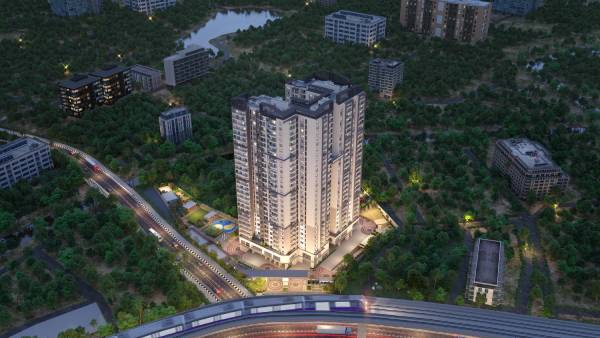HDFC Bank has leased an 80,000-square-foot office space in Ahmedabad.
HDFC Bank has leased nearly 80,000 lakh square feet of office space in Ahmedabad’s RTO Circle commercial project Himalaya Elanza. The private sector bank has leased the office space for a five-year term and will pay nearly Rs 5 crore in annual rent.
The transaction is significant because the Mumbai-based bank is acquiring this size of office space in one of the key tier II cities.
The bank will most likely use the space to establish its processing unit and customer service operations.
“This is our first transaction with HDFC Bank, and we hope to strengthen our relationship in the future.” “With this transaction, approximately 85 percent of this project is now occupied,” said Kamlesh Modi, MD, Himalaya Buildcon.
Himalaya Buildcon, an Ahmedabad-based real estate developer, is building the commercial tower, which has 3.5 lakh square feet of office space. The project’s key occupiers include the Ahmedabad Urban Development Authority (AUDA), the RTO Department of the Gujarat government, Indian Bank, Suzuki Bikes, Yamaha Bikes, Patanjali, and a 113-room hotel Central Inn Hotel.
“In responding to the remarkably increased activity in the BFSI sector following Covid-19, HDFC Bank Ltd. has taken up this prime office space in Ahmedabad’s Himalaya Elanza commercial tower to deploy full-fledged back-office services and employee training activities.” Given how quickly Ahmedabad is establishing itself as an important economic hub, the timing is more than suitable, and the location is ideal,” said Bappaditya Basu, Chief Business Officer of ANAROCK Commercial, which decided to act as the transaction adviser.
Emails sent to HDFC Bank by ET went unanswered.
Following the outbreak of the Covid-19 pandemic, activity in tier 2 commercial real estate has increased. This is due to general affordability, the availability of the right talent, price stability, the availability of more options, and relatively lower competition for properties.
The combination of these factors has drawn businesses, occupiers, and investors from major cities and metropolises to tier II cities. Companies and investors are now looking to invest in tier-II commercial real estate for their expansion, knowing that they will benefit from contributing to the economic growth of these centres.
Due to pandemic-related mobility restrictions, there has been a shift in the last two years from large, consolidated working space and headquarters to the rise of work-from-home, hybrid work models, satellite offices, and flexible workspace.
While the concept of work-from-home ensured business continuity during the lockdown, work flexibility gave employers the option of accomplishing work remotely with the help of technology, as opposed to the previous options.



















































































